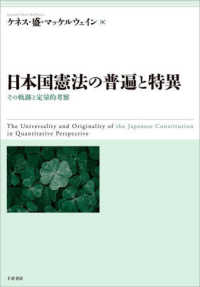Full Description
How can admissions officers, employers, and scholarship committees maximize the accuracy of prediction of individual performance while minimizing adverse impact due to group differences? Testing offers a straightforward solution to the first half of this problem. Tests are the best way to predict how someone will perform in school, in the military, in medicine, or while controlling airline traffic and flying a plane. Tests are also useful beyond personnel selection, such as for selection of a college major or courses. However, the other side of this problem is more complex. Using tests is always accompanied by group differences that could result in continued systemic discrimination by limiting opportunities for those who are marginalized. This book charts an approach to using tests that incorporates evidence, transparency, and societal values to maximize efficiency and fairness.
Contents
Preface; 1. Introduction to the history of testing; 2. Why tests are so widely disliked; 3. The origins of mental testing in the US military; 4. Testing in grades K-12; 5. Licensing exams: physicians, pilots and teachers as examples; 6. Admission testing for higher education; 7. Tests used for awarding scholarships and prizes; 8. Using student test scores to evaluate teachers: an assessment of value-added modeling; 9. Dividing test scores into subcomponents; 10. On cost functions in testing; 11. Evidence in science: what data can we trust?; 12. Testing zombies; 13. Coda; References; Index.






